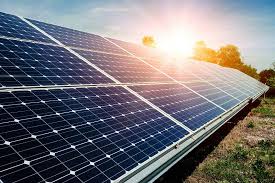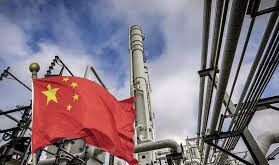India’s leading renewable energy developer, ReNew Energy Global PLC, has reportedly planned to switch its strategy, from growth based on China’s raw material supply to seek independent development, which has been viewed as India’s move to “counter China” in the sector.
Until recently, ReNew Energy and other Indian renewable energy developers have been focusing on developing products relying on raw materials imported from China. In an abrupt turn, they “are planning to make the panels and components themselves, part of an all-out campaign by India to break China’s lock on the solar supply chain,” the Wall Street Journal reported on Wednesday.
Though it is understandable for any manufacturer to shore up competitiveness or diversify supply sources, it is of great significance to point out that the “counter China” initiative, as some media and politicians have portrayed, is wrong and pursuing development by decoupling with the sector’s leading player would not be a wise choice for India, obviously.
For starters, it would generate imminent difficulties for Indian manufacturers given that about 90 percent of the components and parts for manufacturing its solar panels come from China, and simply elevating tariffs would push up costs for Indian producers and even lose important job opportunities.
Moreover, India has pledged to achieve net zero carbon emissions by 2070, which has been viewed by many as an ambitious goal. It is crucial for India to speed up implementation of new energies under such circumstances and disengaging with its largest supplier in the solar sector is a highly risky choice.
Interrupting a mature industrial chain is never a good choice for economies to grow. Instead, they have to integrate into the regional and global value chain as a better way to boost sustainable growth, like China has demonstrated in the past decades with its unswerving opening-up policy.
China has now grown into a top player in the global solar industry producing more than 70 percent of photovoltaic modules for the global market. In the first three quarters of the year, China produced 360,000 tons of polycrystalline silicon, a high-purity silicon that is the main material in solar cells, up 24.1 percent year-on-year, Wang Bohua, Secretary-General of the China Photovoltaic Industry Association, said at the China Photovoltaic Industry Annual Conference on Wednesday.
The country exported $23.1 billion on photovoltaic products from January to October, jumping 44.6 percent year-on-year. Its exports of photovoltaic modules saw a 32.2 percent growth in the same period, Wang mentioned.
Such energetic growth of China’s solar industry does not emerge overnight. Its advantages are the product of years of accrued experience, as well as of China’s overall manufacturing capacity, the most vital manufacturing hub in the world.
It is important to highlight that Chinese producers did not grow in a closed business environment and the expansion of Chinese solar and other industries has generated synergic effects in Asia and even wider regions.
The Regional Comprehensive Economic Partnership (RCEP) is coming into effective next month. As a mega free trade deal, covering 30 percent of the world’s population and 30 percent of the global economy, it is expected to hugely boost economic integration of all members. By enhancing industrial integration, China and other economies under the framework are believed to see faster development based on each other’s comparative advantages, including the solar industry.
However, by refusing to integrate into regional value chains and, regrettably, attempting to undermine mature industrial chains in China out of geopolitical calculations, India is actually dampening the prospect of its own industries.
It is the accelerating nationalism and protectionism in the country which serves as the real threat to its economic development and the Indian government should take a through reflection over its policies toward China, especially after its years of unavailing efforts to decouple its economy from China.
As for India’s solar industry, growing amid regional cooperation and expanding under positive competition would be a better choice instead of decoupling with its largest supplier.
 Iran Energy News Oil, Gas, Petrochemical and Energy Field Specialized Channel
Iran Energy News Oil, Gas, Petrochemical and Energy Field Specialized Channel




